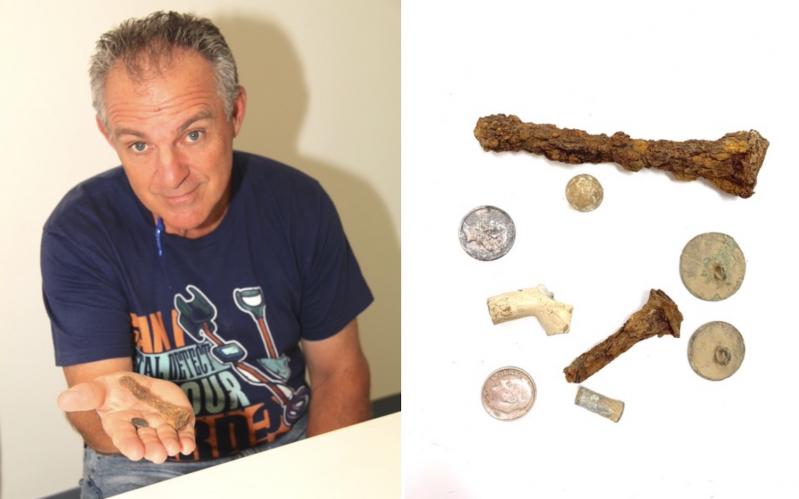Back in March, Peter Zegler and Bob Beck, metal detectorists, saw an opportunity to uncover some East Hampton Village history after learning of plans to renovate the fields at Herrick Park, and they requested permission from the village board to get to work.
On Friday, Mr. Zegler presented their findings to the board.
“We had a great time,” he said.
The two did some prep work before construction began, he said, to find out the “personality” of the park. They were disappointed to discover that during a 1980 renovation, a lot of topsoil was brought in, and the park regraded. This meant many of the treasures they hoped to find were perhaps a “good foot” below the surface.
For the first three hours, they found mostly modern items, said Mr. Zegler. “We found clad coins, and flip-tops from cans.”
They decided to wait until the tennis and basketball courts were removed, hoping they would find untouched 18th-century soil below.
The tennis courts turned out to be a nine-inch pile of asphalt set atop 18 inches of poured sand. Too deep.
The basketball court was far more fruitful. It had been laid over an expanse of undisturbed soil, and soon their metal detectors were beeping with excitement.
In 1740, Mr. Zegler reminded the trustees, the Gardiner Brown House, now home to the Ladies Village Improvement Society, was built, steps from where the basketball court had been. Most of their finds in the soil below were from that era. The team found flat buttons dating from the late 1600s to the late 1700s, which, Mr. Zegler said, were “the common button worn in farm fields after East Hampton was discovered.”
The men also found 18th-century “rose-head nails,” made by “nailers” who could turn out 2,000 a day, and a single musket ball, dating between 1720 and 1750, “used to shoot wild game,” that had likely slipped out of a someone’s pocket. A 1732 British halfpenny rounded out their metal findings, though they also unearthed a portion of a clay pipe, engraved with what may be tobacco leaves.
“People smoked tobacco and maybe some other stuff” with them, Mr. Zegler said. “You could find your favorite clay pipe at a tavern, on the wall.” Millions were made.
“It’s exciting when you find things like this,” he said. “On the un-landscaped property along Main Street, you’re bound to find a lot more of these items.”
Mayor Jerry Larsen encouraged him to make a shadow box of the finds, which would be put on display at Village Hall.




